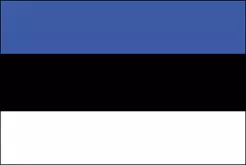Foreigners introduced many new aspects of culture to the people, beginning with Christianity and the growth of cities and trading posts, guaranteeing continuous outside contact. These influences began in the form of trade and influence, but soon turned into foreign control over the people, including being ruled by the Swedes and Russians. While these people changed the culture and lifestyle to a degree, they also encouraged a stronger Estonian identity as the people clung tightly to their language, foods, dress, and lifestyle.
The Soviet Union eventually took over the Estonian people and this vastly changed the lifestyle. The Soviets introduced technology in numerous forms, while encouraging people to urbanize and take on jobs in the industrial sector. Farming was still needed and remained an important occupation for many people, but urbanization occurred to a great degree as well. More importantly though, the Soviet government encouraged ethnic Russians to work these new jobs in Estonia as cities swelled with Russians.
The introduction of ethnic Russians created some tensions, but also solidified the differences between these two groups culturally. The Russians maintained most aspects of their culture, while the Estonians clung to their historic culture, magnifying the differences and more strongly identifying as "Estonian."
Today the ethnic division remains in the country, with Russians heavily focused in urban centers, while the Estonians live throughout the country. Both maintain their own histories, cultures, lifestyles, and identities. However, the country is still changing as the people are looking west for inspiration and growth; Estonia joined the European Union as it progresses technologically and economically.
 The colors on Estonia's flag have unknown origins and meanings. Blue likely represents faith, loyalty, devotion, the sky, sea, or lakes, black symbolizes the soil of the country and the dark past endured by the people, while white likely represents the country striving towards enlightenment and virtue.
The colors on Estonia's flag have unknown origins and meanings. Blue likely represents faith, loyalty, devotion, the sky, sea, or lakes, black symbolizes the soil of the country and the dark past endured by the people, while white likely represents the country striving towards enlightenment and virtue.
Name: Republic of Estonia
Independence: August 20, 1991 & February 24, 1918 (celebrated)
Capital: Tallinn
Currency: Euro
Population: 1,266,375 (2013 estimate)
Ethnicity: Estonian, Russian, & others
Language: Estonian
Religion: None & Evangelical Lutheran